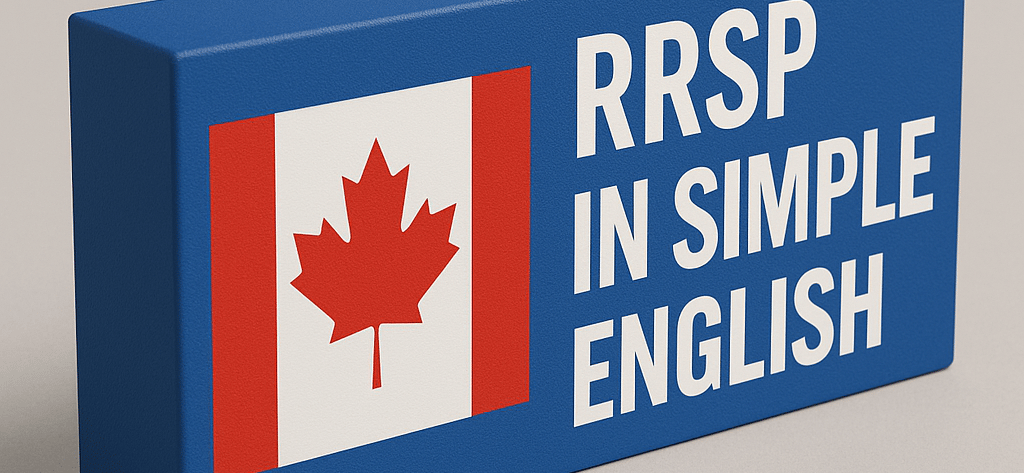RRSP Explained in Simple Language: Individual vs. Spousal RRSP
A clear guide to how RRSPs work in Canada, including Individual and Spousal RRSPs, contribution rules, taxes, and CRA rules—explained using everyday examples.
GUIDES
@StartrightCan
11/24/20254 min read


1. What an RRSP Actually Is — In Plain Language
An RRSP is simply:
A government-approved savings account that reduces your tax now and grows your money without yearly tax until you withdraw later.
The rules come from the Income Tax Act (Section 146), and CRA applies those rules.
CRA overview:
https://www.canada.ca/en/revenue-agency/services/tax/individuals/topics/rrsps-related-plans.html
2. Why People Use RRSPs
Because RRSPs give you three benefits:
Lower taxes today (your contribution reduces your taxable income).
Tax-free growth inside the account.
Potentially lower taxes in retirement when your income is smaller.
3. Individual RRSP — The Basic One
How it works
You contribute.
You get the tax deduction.
You own the account.
You are taxed when you withdraw.
Example (simple math):
Emily earns $80,000.
She contributes $8,000.
Her taxable income becomes $72,000.
She gets a tax refund because she paid tax as if she earned $80,000.
CRA contribution limit rules:
https://www.canada.ca/en/revenue-agency/services/tax/individuals/topics/rrsps-related-plans/rrsp-deduction-limit.html
4. Spousal RRSP — The Income-Splitting Tool
A Spousal RRSP is an RRSP owned by your spouse, but you make the contribution.
Why?
To help couples reduce taxes in retirement by balancing their incomes.
Example:
Sam earns $120,000.
His spouse, Joy, earns $30,000.
If Sam contributes to Joy’s Spousal RRSP, then:
Sam gets the tax refund today (because he contributed).
Joy will be taxed later when she withdraws, likely at a much lower tax rate.
CRA explanation:
https://www.canada.ca/en/revenue-agency/services/tax/individuals/topics/rrsps-related-plans/spousal-rrsps-common-law-partner-rrsps.html
5. Whose Contribution Room Is Used for a Spousal RRSP? (Very Important)
This is where most Canadians get confused.
A Spousal RRSP uses the CONTRIBUTOR’S RRSP room, not the spouse’s.
Meaning:
If Sam contributes $10,000 to Joy’s Spousal RRSP:
The $10,000 reduces Sam’s RRSP room.
Not Joy’s.
The ownership of the account does not change how contribution room is calculated.
This is a critical planning detail.
6. The 3-Year Rule (Attribution Rule) — Explained Simply
If your spouse withdraws money within 3 years of your contribution, CRA taxes YOU, not them.
Example using years:
Sam contributes in:
2025
2026
2027
If Joy withdraws in 2027, 2026, or 2025, CRA taxes Sam.
If she withdraws in 2029 or later, it is taxed to Joy.
This prevents quick “put in today, withdraw tomorrow” abuse.
Attribution rule reference:
https://www.canada.ca/en/revenue-agency/services/tax/individuals/topics/rrsps-related-plans/spousal-rrsps-common-law-partner-rrsps.html#attribution
7. RRSP Contribution Room — Simple Explanation
Your RRSP “room” is the maximum you are allowed to contribute each year.
CRA gives you this number automatically.
Formula (simplified):
18% of last year’s income
up to CRA’s annual limit
minus pension adjustments
plus unused room from previous years
2024 limit: $31,560
Reference:
https://www.canada.ca/en/revenue-agency/services/tax/individuals/topics/rrsps-related-plans/rrsp-limits.html
8. Everyday Scenarios (With Numbers)
These examples use real numbers so anyone can follow them.
Scenario 1: Both spouses earn similar income — use Individual RRSPs
John earns $85,000.
Sarah earns $82,000.
Both contribute $10,000 to their own RRSPs.
John reduces his taxable income to $75,000.
Sarah reduces hers to $72,000.
No major benefit to income-splitting because their retirement incomes will be similar.
Scenario 2: One spouse earns much more — Spousal RRSP helps split retirement income
Tunde earns $110,000.
Mariam earns $28,000.
Tunde contributes $12,000 to a Spousal RRSP for Mariam.
What happens:
Tunde gets the tax deduction based on $12,000.
Mariam owns the RRSP.
In retirement, Mariam withdraws at a lower tax rate than Tunde would.
This could save thousands in lifetime tax.
Scenario 3: Early retirement before 65 — Spousal RRSP gives flexibility
James earns $130,000 and plans to retire at 57.
His wife Sandra earns $40,000.
James contributes $15,000 annually to Sandra’s Spousal RRSP for 10 years.
When they retire early (age 57):
Sandra withdraws from her Spousal RRSP at a low tax rate.
They aren’t yet eligible for pension income splitting (only available from 65).
This gives them a 7–8 year tax advantage.
Scenario 4: Temporary career break — Spousal RRSP smooths out long-term savings
If Priya goes on maternity leave and earns very little for 2–3 years,
her spouse Daniel can keep contributing to Priya’s Spousal RRSP using Daniel’s own RRSP room.
This keeps their long-term retirement savings balanced.
9. Common Mistakes to Avoid
Mistake 1 — Thinking a Spousal RRSP is a joint account
It is not. Only one spouse owns it.
Mistake 2 — Forgetting the 3-year rule
Most unexpected tax bills come from this.
Mistake 3 — Overcontributing
Over $2,000 above your limit triggers a 1% monthly penalty.
Penalty rules:
https://www.canada.ca/en/revenue-agency/services/tax/individuals/topics/rrsps-related-plans/over-contributions-rrsps.html
10. The Bottom Line
Here’s the simple summary:
Individual RRSP
You contribute. You get the refund. You own it. You’re taxed later.Spousal RRSP
You contribute (from your RRSP room).
You get the refund.
Your spouse owns it.
Your spouse is taxed later — unless within the 3-year rule.
RRSPs don’t have to be complicated.
It’s all about knowing who contributes, who owns the account, who gets the tax benefit, and who eventually pays the tax.
Watch out for Part 2 of this series: Group RRSPs and Pension Plans In Simple And Clear Language.
Follow @startrightcan on Instagram and X/Twitter for more like this.
Get my bestselling book, Starting Right: A Newcomer's Guide to Canada's Financial System, here: https://www.amazon.ca/dp/B0G2XHD1ZF